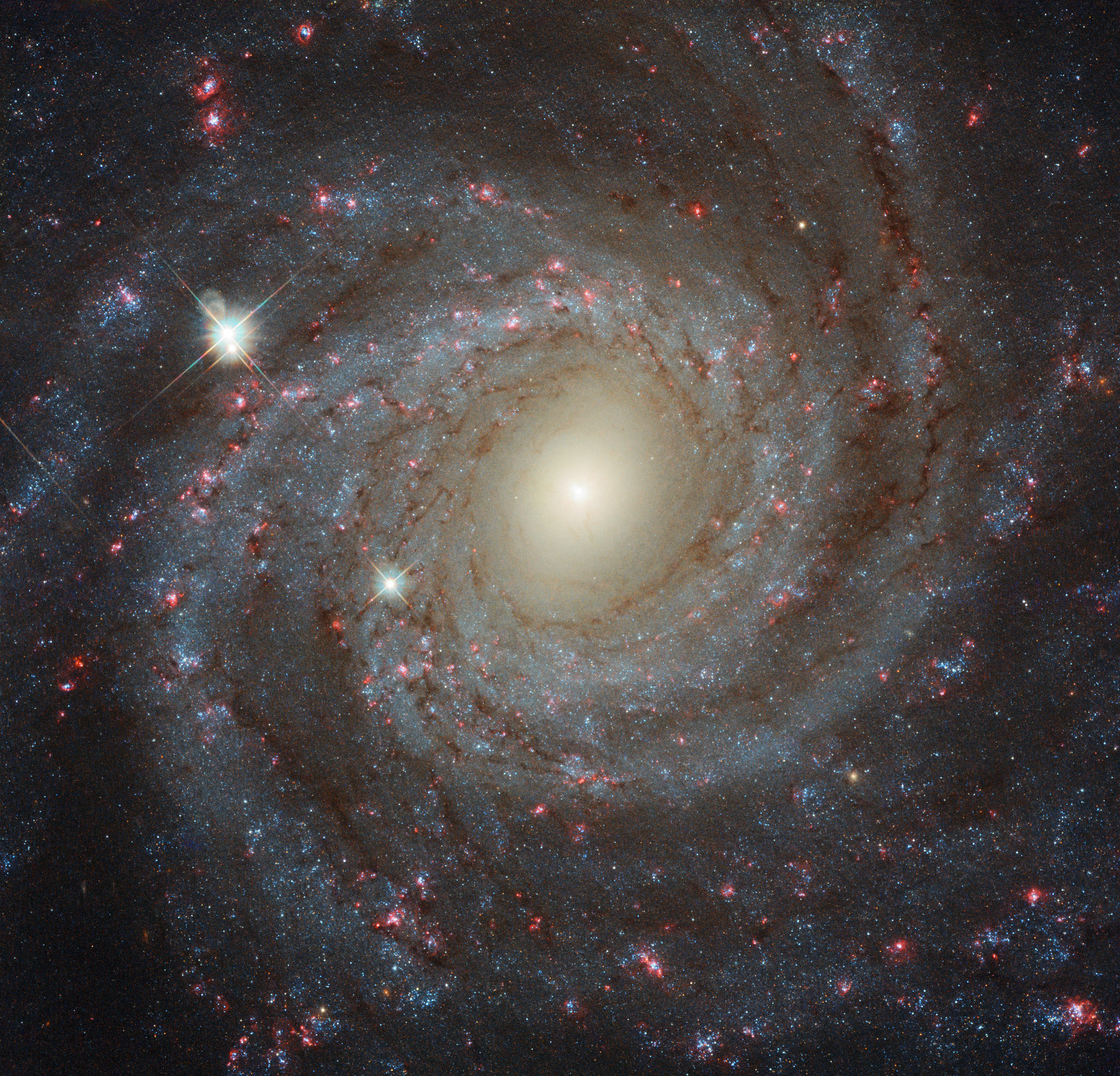
This Hubble Space Telescope image presents a stunning face-on view of NGC 3344, a grand-design spiral galaxy located 20 million light-years away in the constellation Leo Minor. Captured in colors spanning near-infrared to ultraviolet, the mosaic reveals intricate details of the galaxy’s central bulge and fragmented spiral arms.
Location of NGC 3344
NGC 3344 sits approximately 20 million light-years from Earth, placing it among our relatively nearby extragalactic neighbors. Its face-on orientation offers astronomers an unobstructed look at its spiral structure, unlike edge-on galaxies where dust lanes obscure the view.
The galaxy spans nearly 40 000 light-years across, with this Hubble frame covering roughly the inner 15 000 light-years of its disk. Situated in Leo Minor, NGC 3344 lies well off the plane of the Milky Way, minimizing foreground obscuration and making it an ideal target for high-resolution optical and ultraviolet observations.
Structural Details
At the heart of NGC 3344, a bright, yellowish bulge glows with the combined light of mature, low-mass stars. This central region, densely packed with an older stellar population, dominates the galaxy’s near-infrared signature and hints at a historically active star-formation epoch.
Radiating outward, the spiral arms appear loose and fragmented, dotted with compact blue clusters of young, massive stars. These clusters trace the galaxy’s spiral density waves, marking sites where gas has recently collapsed under gravity. Along the arms, reddened knots reveal ionized hydrogen regions—stellar nurseries where new stars continue to ignite amid clouds of interstellar gas and dust.
Scientific Importance of the Cosmic Double
Studying a face-on spiral like NGC 3344 helps astronomers decode the dynamics of spiral density waves and the processes governing star formation in galactic disks. By comparing light at different wavelengths—from ultraviolet bursts of young stars to infrared emissions of dust—researchers can reconstruct the galaxy’s star-formation history and map its interstellar medium.
NGC 3344’s well-defined bulge-to-disk ratio also offers insights into the role of central mass concentrations in shaping spiral structure. The relative isolation of this galaxy minimizes tidal disturbances, allowing scientists to test models of spiral arm formation driven by internal gravitational instabilities rather than external interactions.
Visual Impact
The image’s color palette shifts seamlessly from the warm, golden core to the vibrant blues of star clusters and the soft reds of H II regions. This gradient not only highlights stellar populations of different ages but also guides the eye along the galaxy’s winding arms.
Foreground stars in our own Milky Way appear as bright points with characteristic diffraction spikes—reminders of our vantage point within the galactic plane. These spiky stars frame NGC 3344 without detracting from its elegant spiral form, creating a layered depth that enhances the overall composition.
Credit
Image Credit: ESA/Hubble & NASA
